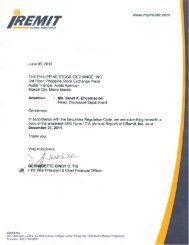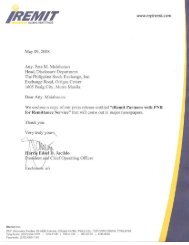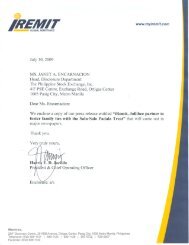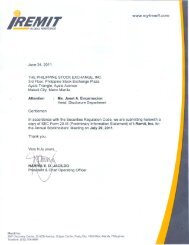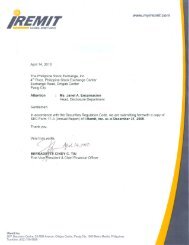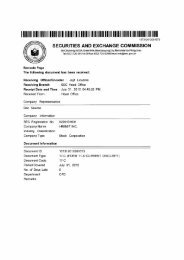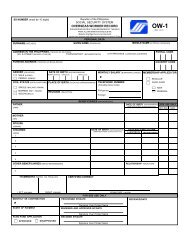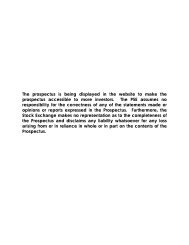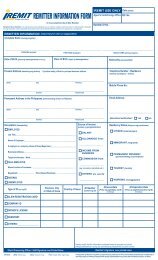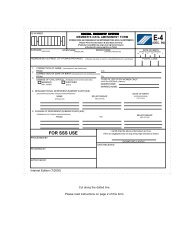SEC Form 20-IS - iRemit Global Remittance
SEC Form 20-IS - iRemit Global Remittance
SEC Form 20-IS - iRemit Global Remittance
You also want an ePaper? Increase the reach of your titles
YUMPU automatically turns print PDFs into web optimized ePapers that Google loves.
- 3 -<br />
Statement of Compliance<br />
The accompanying consolidated financial statements have been prepared in compliance with<br />
Philippine Financial Reporting Standards (PFRS).<br />
Basis of Consolidation<br />
The financial statements of subsidiaries are prepared for the same reporting year as the Parent<br />
Company, using consistent accounting policies.<br />
Subsidiaries are all entities over which the Group has the power to govern the financial and<br />
operating policies generally accompanying a shareholding of more than one half of the voting<br />
rights. The existence and effect of potential voting rights that are currently exercisable or<br />
convertible are considered when assessing whether the Group has control over the entity.<br />
All significant intra-group balances, transactions, income and expenses and profits and losses<br />
resulting from intra-group transactions are eliminated in full.<br />
Subsidiaries are consolidated from the date on which control is transferred to the Group. Control<br />
is achieved when the Group has the power to govern the financial and operating policies of an<br />
entity so as to obtain benefits from its activities. Consolidation of subsidiaries ceases when<br />
control is transferred out of the Group.<br />
The results of subsidiaries acquired or disposed of during the year are included in the consolidated<br />
statement of income from the date of acquisition up to the date of disposal, as appropriate.<br />
A change in the ownership interest of a subsidiary, without a loss of control, is accounted for as an<br />
equity transaction. If the Group losses control over the subsidiary, it:<br />
• derecognizes the assets (including goodwill) and liabilities of the subsidiary;<br />
• derecognizes the carrying amount of any noncontrolling interest;<br />
• derecognizes the related other comprehensive income recorded in equity and recycle the same<br />
to profit or loss or retained earnings;<br />
• recognizes the fair value of the consideration received;<br />
• recognizes the fair value of any investment retained; and<br />
• recognizes any surplus or deficit in profit or loss.<br />
Business Combinations and Goodwill<br />
Business combinations from January 1, <strong>20</strong>10<br />
Business combinations are accounted for using the acquisition method. The cost of an acquisition<br />
is measured as the aggregate of the consideration transferred, measured at acquisition date fair<br />
value and the amount of any noncontrolling interest in the acquiree. For each business<br />
combination, the acquirer measures the noncontrolling interest in the acquiree either at fair value<br />
or at the proportionate share of the acquiree’s identifiable net assets. Acquisition costs incurred<br />
are expensed and included in operating expenses.<br />
When the Group acquires a business, it assesses the financial assets and liabilities assumed for<br />
appropriate classification and designation in accordance with the contractual terms, economic<br />
circumstances and pertinent conditions as at the acquisition date. This includes the separation of<br />
embedded derivatives in host contracts by the acquiree.<br />
*SGVMC116502*



